Beatriz Kimpa Vita, African Prophet
Kimpa Vita was born in 1684 in the Kingdom of Kongo, which isn’t there any more. The kingdom had been founded some time in the 13th or 14th century and was located south to the Congo river on the western coast of Africa. In the mid-seventeenth century it covered an area roughly twice the size of Ireland, and had a population of about half a million people. Fully 20% of them lived in the capital of M’banza-Kongo (which at the time the Portugese insisted on calling São Salvador). That included their ruler, the Manikongo – the King of Kongo. From here he controlled not just his own kingdom but also exerted control over a half-dozen surrounding client kingdoms.
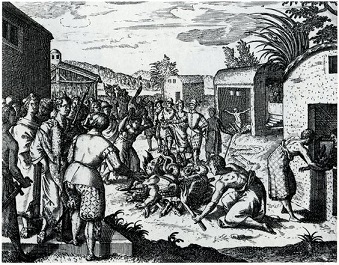
Everything changed for the Kingdom of Kongo in 1485 when the Manikongo at the time, Nzinga a Nkuwu, converted to Christianity. The Portuguese had first arrived in the kingdom two years earlier and as was traditional with the two superpowers of the Iberian Peninsula at the time (Portugal and Spain) their journey was as much missionary work as it was mercantile. That’s not to say it wasn’t mercantile as well, though. The two countries forged trading bonds and had cultural exchanges. The first school in Kongo was set up by a native who had gone to Portugal to learn, while M’banza-Kongo became the biggest slave-trading port on the west coast. It wasn’t Kongo citizens being sold though, at least not usually. Instead the tribes fighting wars within the continent would capture the losers in those conflicts and sell them to traders, who would take them to the coast. There the Portuguese would load them on to ships and take them across to the South American colonies, where their lives could be spent to create wealth in the form of sugar, coffee and other cash crops.
Nzinga’s son Mvemba was baptised a Christian and became King Afonso I, and he made Christianity the state religion of Kongo in the early 16th century. The original version of Christianity in Kongo was highly syncretic – like the Celtic Church in Ireland it took on elements of the pre-existing religion in order to make itself more acceptable. Over time though it gradually moved back towards a more mainstream Catholicism – partially due to the efforts of the Counter-Reformation throughout the church, and partially to allow the Portuguese monarchy to use it as a tool of control. They had more influence over the church, and so they could ensure that it was a Portuguese bishop who had authority over the priests of the Kongo. This move back towards a more orthodox Catholicism was shepherded first by members of the Society of Jesus (Jesuits), and then by members of the Capuchin order.
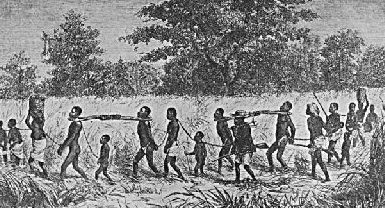
The relationship between Portugal and Kongo deteriorated in the 17th century, mostly due to the establishment of the Portuguese colony of Angola to the south of Kongo in 1575. In contrast to their behaviour towards Kongo, Angola was a much more traditional colonization – which is to say, the Portuguese took direct control of the area and the natives were swiftly turned into second-class citizens. Though Kongo was an ally in their battles to conquer Angola, it soon became clear that Portugal would be perfectly happy to put their former allies under exactly the same regime. In 1622 Portuguese forces invaded the Kongo but were beaten back, and the Manikongo severed ties and made an alliance with the Dutch. Then in 1665 one of the tiny kingdoms on the border between Angola and Kongo had a succession crisis.
The Portuguese and the Kongolese each took a different side, and each sent forces to fight in the proxy war in Mbwila. King Antonio of Kongo led his own forces into battle, and though his army outnumbered the Portuguese two to one they were defeated and he was killed. His heir, still a boy, was captured and many of the royal family were either killed or wound up sent to Brazil as slaves. The result was a brutal civil war that would rage on for decades. In 1678, as a result of this war, M’banza-Kongo was burned to the ground and the population were forced to flee, tearing the heart out of the country. It was into this chaos that Kimpa Vita was born. [1]
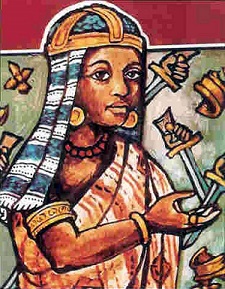
Her birth year is usually given as 1684 (some sources say 1686). As was traditional in Kongo at the time, she was given a traditional name at birth (Kimpa) and then the name of a European saint at baptism (Beatriz). [2] Her family were upper-class, being what is known as Mwana Kongo family – as this name suggests, it means that somewhere in her ancestry was a former king of the Kongo. They were one of the richer families in the village, who had both slaves and serfs to work the fields for them. [3] Her father led the local units who occasionally went off to fight in the civil wars during her childhood.
From an early age, Beatriz was considered special. She was intelligent and spiritual, and was given to having visions. As a result she was trained as a nganga marinda. In the traditional beliefs of the Kongo people, a nganga was a messenger for the spirits – one who used “nkisi”, or sacred totems, to communicate with the spirit world. A nganga marinda was one who used this communion to try to solve the problems of the people as a whole (as opposed to solving the problems of any one person.) The office was not, in their minds, entirely incompatible with Christian beliefs. Weren’t Catholic priests just nganga a Nzambi – messengers of God? [4] However Beatriz did decide in the end that this practise was incompatible with her Christianity, so she abandoned it.
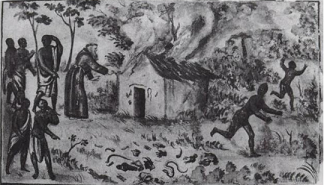
She may have been influenced in this by the ongoing conflict at the time between the Capuchin order and the older religious beliefs, personified by the Kimpasi lodges. The Kimpasi were a loosely affiliated set of secret societies that would organise to try to resolve problems that were clearly caused by the spirits being angry at the tribe. In order to dispel this, they would carry out a long ceremony where volunteers were ritually “sacrificed” (tied up onto a wall and left until they fell unconscious), and then revived by prompt treatment. The belief was that in doing this their bodies would be partially possessed by the spirits, and that this would give them the power to dispel the suffering. What truly incensed the Capuchins about this was the Christian symbology that the Kimpasi added to their rituals. After all, so they thought, was Christianity itself not about such a resurrection? On the other side, the ngangas in general and the Kimpasi in particular were, in the words of Father Marcellino of the Capuchins, “witches and priests of idols”. On the 24th March, 1699, he led a group of students and burned a Kimpasi lodge to the ground. The next day he did it again. And on the following Sunday he declared all the Kimpasi excommunicated.
Though Beatriz had decided to stop working as a nganga marinda, this didn’t mean that she was on the side of the priests. In the eyes of the Kongolese, the priests literally were just another type of nganga and though their spiritual knowledge was respected they were far from considered supreme. She had other things on her mind however. As the 18th century dawned, the young Beatriz Kimpa Vita was having marital difficulties. The custom of the people at the time was for them to have a wedding using the native customs (which could be dissolved) and then after a trial period of a year or two they would have a Christian marriage (which would be permanent). But Beatriz didn’t have the temperament for marriage. Twice she was wed, and twice she was returned home and her bride-price was returned to her ex-husband. And then in 1704 she fell ill, and Saint Anthony came to her, and everything changed.
The first recorded prophet to arrive in the Kongo at the time was an unnamed woman in 1703 who had a vision of the Virgin Mary. She was told that the unending civil wars were because the people had angered God, and that they must daily recite the Hail Mary three times and then beg forgiveness. Soon the ritual became so widespread that the Capuchins became disturbed. Another prophet, this time a man, began preaching that the capital of M’banza-Kongo (which was being rebuilt at the time) must be re-occupied as soon as possible, to prevent disaster. Then a woman named Apollonia Mafuta began preaching iconoclasm, declaring that even crucifixes and bibles were potentially blasphemous artifacts. She attained enough of a following that the King himself had her brought to his court and spoke to her. The Capuchins wanted her arrested and tried for heresy, but the King decided against it. They were less than pleased by this.
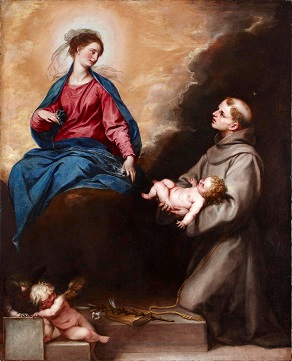
Beatriz Kimpa Vita’s own epiphany occurred during her illness in 1704. While she lay sick, she had a vision of Saint Anthony of Padua. He was one of the most significant Portuguese saints and so had been highly emphasised by the missionaries in Kongo. According to her later accounts, Saint Anthony entered and possessed her just as the youths of the Kimpasi were possessed. She arose from her sickbed filled with the belief that she had a destiny to fulfill. Once again she took on the office of nganga marinda, but this time the problems she intended to solve were on a national scale.
It didn’t take long for Beatriz, like Mafuta, to come to the king’s attention. With the authority of a nganga marinda protecting her, she denounced the Capuchins claiming that the reason they had demanded Mafuta be handed over was so that “there would be no black saints in Kongo”. Like the previous prophets she also preached that M’banza-Kongo needed to be reoccupied. When the king let her go she went out into the country to preach, and soon evolved her message further.
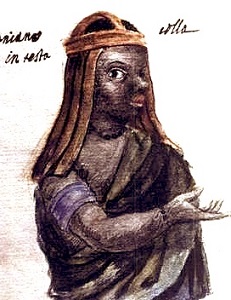
To the crowds that soon assembled to hear her preach, Dona Beatriz Kimpa Vita began to preach a radical new theology. There were saints in Kongo, she told, for was she not proof? But that was not all. She told them that they had been lied to, and that the European-looking images of Jesus and Mary that adorned the Catholic churches were false. (Which was true, of course.) Instead she told them that Jesus had been born in Kongo, in the city of M’banza-Kongo. His mother Mary had been the slave of a Kongolese nobleman, and she had fled with him to the northern province of Nsundi. This, she said, was what the scriptures referred to as “Nazareth”. The rest of her theology can be gleaned from her teachings:
God wants an intention, it is the intention that God grasps. Baptism serves nothing, it is the intent that God takes. Confession serves nothing, it is the intention that God wants. Good works serve no purpose, intention is what God wants. [6]
The saints also figured in her mythology, and she also made them Kongolese. Saint Francis (who was associated with the Capuchin order) was from the same clan as the man who had been Mary’s master. Saint Anthony, her own inhabiting spirit, was given special veneration. To him she attributed the pre-eminence among saints that the Catholics gave to Mary.
Saint Anthony is the merciful one. Saint Anthony is the restorer of the Kingdom of Kongo. Saint Anthony is the door to Heaven. Saint Anthony holds the keys to Heaven. Saint Anthony is above the Angels and the Virgin Mary…
When word of her preaching reached Father Bernardo, the leader of the Capuchins in Kongo and advisor to King Pedro (one of the two rival claimants to the throne), he sent for her and interviewed her. It didn’t go well for him – he was unable to shake her composure and lost his temper, accusing her of witchcraft. It was not Saint Anthony who possessed her, he said, but the Devil. After she had left he went to the King and convinced him to support him when he denounced her that Sunday at mass, as a prelude to a trial for heresy. His scheming was in vain though – whether warned by friends or by a presentiment of doom she left the king’s camp the day before.

Beatriz continued to preach, and soon had amassed a large following who became known as Antonians. In October of 1704 she visited the court of King Joao, the other claimant to the throne. He was even less open to her teaching than King Pedro had been, but she still managed to recruit even more followers from his capital. She was forced to flee the capital when King Joao sent his guards to attack her and her followers, but she claimed to her followers that she had achieved her mission in his capital and had retrieved a key piece of royal regalia – a bag containing a papal bull given to a previous king. She hadn’t, but they believed her. So they followed her as she set off to do what neither king could do – restore M’banza-Kongo. [7]
In November of 1704, as the southern hemisphere’s rainy summer got underway, Dona Beatriz Kimpa Vita and her followers arrived in M’banza-Kongo. It was hard going for the first few months, as they had little food. After that the corn they had planted when they arrived ripened, and things grew easier. Her “success” in re-establishing the capital won her a lot of respect from the peasants of the Kingdom, and in turn got her the ire of the nobles. In 1705 she began to send out missionaries, who she called “Little Anthonies”, to preach her teaching. Many of them claimed to be possessed by lesser saints (in the Antonian theology all other saints were lesser) such as Saint Lucy and Saint Isabel. They distributed little statues of Saint Anthony, to replace the crucifixes that people had previously worn. And they told everyone that the European priests were liars.
Throughout 1705 the power of the movement grew, and several nobles began to take action against it – arresting and expelling the “Little Anthonies”. The Antonians had their supporters though – the forces of the Kimpanzu (descendents of an earlier king who had fled into exile and who opposed both Pedro and Joao) mobilised to protect them. In early 1706 King Pedro moved into position to mount an attack on him. Unbeknownst to him it was an excellent time to do so, as circumstances had forced Beatriz to seperate herself from her followers. She didn’t want them to discover her secret – that she was pregnant.
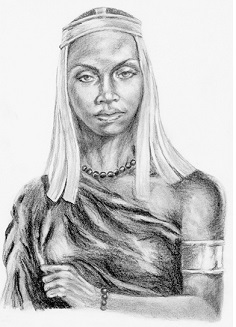
Sometime around when she arrived in M’banza-Kongo, Beatriz had begun an affair with a young man named Joao Barro. He was one of her staunchest supporters, but they had kept their relationship secret due to her preaching on the virtues of chastity. The strict celibacy of the European priests had won them a lot of respect from the Kongolese, so Beatriz was pressured to at least appear to match them. In fact she even founded an order of celibate Kongolese nuns (though that never really took off). It was around the middle of 1705 when Beatriz became pregnant, and at first she was able to hide it from her followers. By the beginning of 1706 though she knew that she would have to remove herself from public view. So she told her followers that she was going to ascend into Heaven, to commune with God. (She had claimed to be doing this every Saturday for the last few months, so this was just an extension of that.) She told them to have patience until her return, and then she left.
In truth, she headed back to the village where she had been born to visit her family and give birth to her child. She and Joao Barro went into hiding there, and she gave birth to a son. She named him Antonio, after the saint she embodied. Unfortunately for her King Pedro’s troops passed through the village, and they heard Antonio’s crying from the stacks of grain. They investigated and discovered Joao, Beatriz and the child. So it was that she fell into the hands of her enemies.
On hearing that his men had cpatured her, the king spent some time in consideration. Eventually he decided that this was not a civil but a religious matter. He intended to send her to Luanda in Angola where the bishop who was in charge of Kongo lived. As supreme authority over the church in the area, he was the correct person to try her. However Father Bernardo, the Capuchin who had crossed paths with Beatriz before, argued against this. He was afraid that the bishop would simply rebuke and release her, while he felt that a “strong lesson” was needed to put an end to this heresy. Father Bernardo himself had no authority to try someone for heresy, but he persuaded the king to try her under civil law. By this loophole Dona Beatriz Kimpa Vita was convicted. She and Joao Barro (and Appolonia Mufata, who had been captured separately) were sentenced to be burned alive.
Beatriz accepted her sentence calmly. She had herself decided that this was a punishment for her sin in sleeping with Joao Barro. She asked the priests if there was a way for her to absolve herself of this sin. The sacrament of Holy Confession was not normally practiced in Kongo at that time, but Father Bernardo decided that it would be a good fit. [8] So she and Joao Barro made full confessions to him. It is thanks to his failure to respect the seal of the confessional that we have much of our insight into her history.
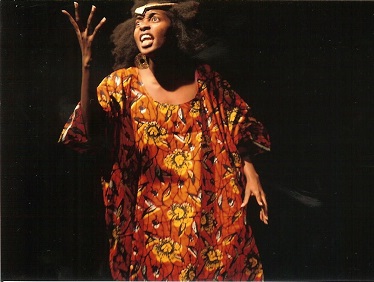
On the 2nd of July 1706 sentence was carried out. Appolonia Mufata was spared, due to her advanced age and clear senility. The king originally intended to burn the baby Antonio as well, but one of the Capuchins (Father Lorenzo) managed to persuade him to relent. The pair were brought out into a square, and the charges were read out. Beatriz was about to address the crowd, but their patience had worn thin during the charges and they broke through the guards and rushed them. The pair were beaten “like dogs”, then thrown onto the piles of wood and then covered with more wood. Then the fire was set. It burned quickly and, in the words of Father Bernardo, “in the time it takes to say a prayer, they gave up their souls”. Beatriz was only 22 years old when she died.
The death of Beatriz didn’t mean the end of the Antonians, of course. Death and rebirth had been a part of her teachings from the beginning, and many of her followers decided that her execution by the king had simply been the fulfilment of what she had told them before she left – that she was going into heaven to consult with God. Two of the Capuchins went to M’banza-Kongo to preach and to proclaim her death. They persuaded the Kimpanzu rebels in the city to disassociate themselves from the Antonians, though this didn’t bring an end to their rebellion. It wasn’t until 1709 that King Pedro captured the city. The same year he defeated King Joao, and brought an end to the civil wars that had raged for the last fifty years.

Of the people who had followed Dona Beatriz Kimpa Vita to M’banza-Kongo, many if not all of them wound up captured by the King’s forces and sold into slavery. The majority of these were transported in slave ships across the Atlantic – some to Brazil, to serve in the Portuguese plantations there, and others sold on to the Dutch and English and sent to their American colonies. The teachings of Dona Beatriz were declared heretical, and the people of the Kongo were ordered to forget them. Yet to this day they and their descendants around the world still draw inspiration from the story of the woman who had stood against the European priests and who had dared to preach about a Jesus who had been black like them.
Images via wikimedia except where stated.
[1] If you’re wondering why Portugal didn’t take advantage of this chaos to conquer Kongo, they tried. In 1670 they invaded Soyo, a former client-kingdom of Kongo which had broken away and become independent but they were thoroughly defeated and their Angolan army was destroyed. Soyo’s Dutch allies then got the Pope to broker a treaty where their independence was recognised and the Portuguese agreed to leave them alone – not that they had the troops to try to go after them again anyway.
[2] The name “Kimpa” seems to be entirely unique to Kimpa Vita. As such it may be a European transliteration of her actual name, or it may be down to there being little other record of female Kongolese names at the time. Though the Kongolese were a literate people, most of their writings on this era have been lost or suppressed. As such we’re forced to rely on the Capuchin records for the most part.
[3] Slaves were captives from war, who had no rights. Serfs (or “clients”) were Kongo people who in practice were little different from slaves, but did have some legal rights.
[4] Nganga actually means “knowledgeable”, so the literal translation wouldhave been “knowledgeable about God”.
[5] In the Kongolese theology the notion of a saint as one possessed by God made perfect sense, of course.
[6] The distinctly Protestant flavour of this teaching led the Capuchins to suspect that she may have been influenced by the Dutch, but they were never able to find any evidence of this. They eventually decided that she had derived it independently.
[7] Neither king could do it as if they did their rival would easily be able to take the opportunity to attack and eliminate them.
[8] If Beatriz had been condemned by the Church, confessing and recanting would have saved her from being burned. Father Bernardo doesn’t seem to have mentioned this to the King.
